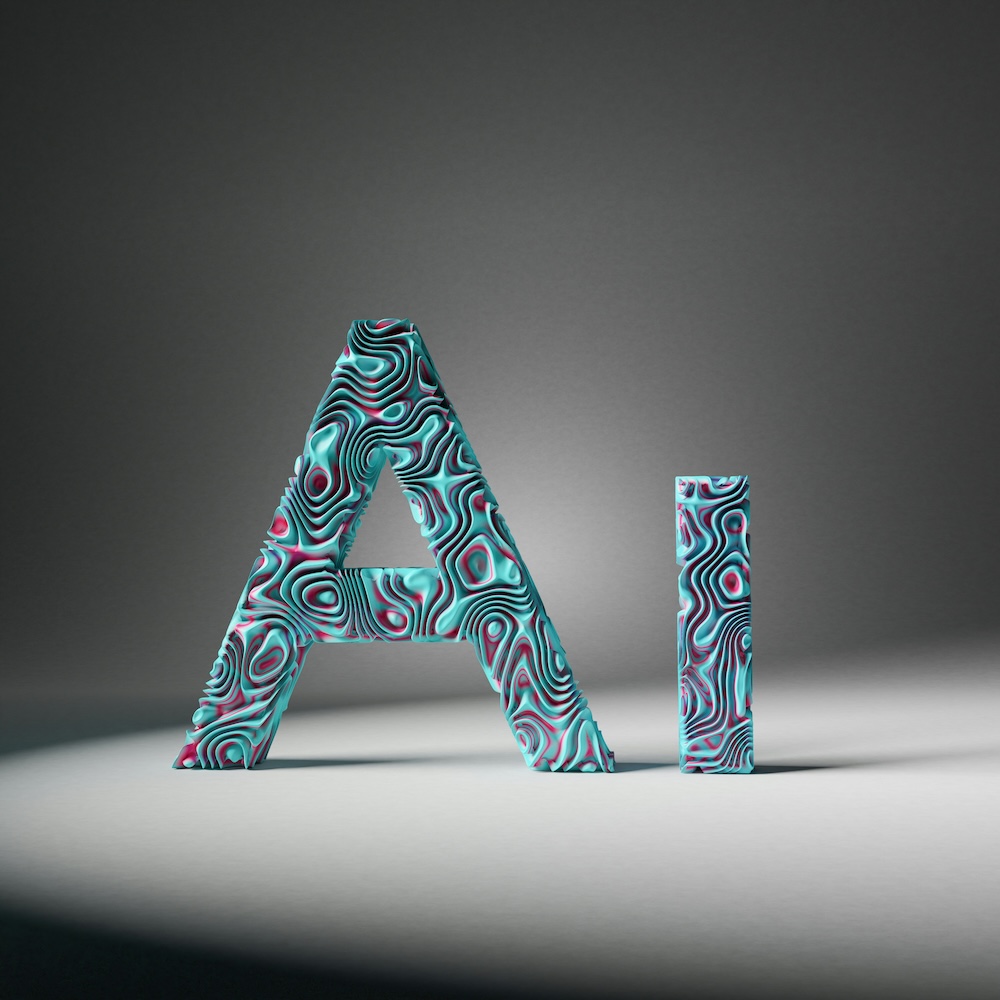The lightning-fast development of ‘Generative AI’ and ‘Machine Learning’ is increasingly hard to keep up with. At any rate, it is clear that it has – or will have – a huge impact. On everything from security and privacy to our digital habits and the way we go about our daily lives – privately and professionally.
As if working in commodity trading needs more dynamics…
The key objective of Agiblocks is and has always been to make a trader’s daily endeavours more efficient – from drafting a contract, setting prices and handling logistics to evaluating risk and adjusting your current position. Obviously, that means keeping in an eye on trends and developments too. The necessity to stay competitive in our industry by improving decision-making – both in terms of having all the correct data available and being able to act quickly – is driven by ongoing optimisation of strategies and automating and streamlining daily practices. AI and machine learning can play a huge part here.
Let’s take a look at what AI might have in store for our industry.
4 ways artificial intelligence will impact the commodity trade
Has the rise of Artificial Intelligence (AI) taken by you surprise? These kinds of technical innovations tend to bring both challenges and opportunities. Indeed, those who are familiar with ChatGPT’s 4.0 version that was introduced last year already know how big of a disruptive leap it can be. When OpenAI launched its 3.0-format and most people had never heard of it, early adopters the world over were astounded by the possibilities of the flagship online software. What’s more, the current ChatGPT-4 is among the most powerful generative AI programs in the world, capable of discussing anything.
Agiblocks, now in its 4.0 version (coincidence?), has something similar in store. Now, we’re not actually likening it to the mega popular conversational chatbot. However, there is a strong similarity still, to be explained through the example of Moore’s Law – the one that says that the number of transistors on computer chips doubles approximately every two years. It is not a law of nature, but an observation of a long-term trend in how technology is changing. The machine learning capabilities at the very core of ChatGPT are hardly new. What is new, is that modern technology and specifically the calculating powers of modern technology have made it possible to have a solution like ChatGPT in your pocket: on a smartphone. Agiblocks offers that too. As such, it’s not ‘simply’ an update of an existing solution. It is the disruptive solution as we’ve always envisioned it. Technology has finally caught up. And that same 4.0 version of our flagship CTRM solution is ready to embrace AI.
1) Reducing complexity
One of the biggest challenges associated with CTRM solutions in soft commodities is the complex supply chain involved in their production and distribution. Unlike more traditional commodities like oil or metals, soft commodities are typically grown and processed in a variety of different locations around the world. This can create a number of logistical challenges when it comes to tracking inventory, managing transportation and storage costs, and ensuring compliance with regulatory requirements.
In addition, soft commodities often have unique quality characteristics that can impact their value. For example, the flavour and aroma of coffee or cocoa can be impacted by the specific growing conditions and processing methods used. This means that the quality of the final product can vary depending on a number of different factors, making it more difficult to accurately value and manage the associated risk.
That same complexity is the adversary of innovation, of forward progress. In our industry, where agility, speed and the flexibility to act on (new) information in real-time are huge factors, we desperately need to be able to see the forest for the trees. Luckily, complexity is where AI shines. From collecting, gathering and handling all the relevant data to creating comprehensible reports and user-friendly dashboards for any means of quick decision-making, you will be able to get to the point in no uncertain terms.
2) Navigating the futures market
Another challenge associated with CTRM for soft commodities is the fact that many of these products are traded on futures markets. While futures contracts can be a useful tool for managing risk, they can also be highly volatile and subject to sudden shifts in market sentiment. This means that traders and risk managers need to be able to react quickly to changes in the market and make informed decisions based on real-time data.
Volatility in soft commodities markets can be caused by a variety of factors, including weather patterns, geopolitical events, and changes in consumer behavior. For example, if a major coffee-producing country experiences a drought, this can lead to a decrease in supply and an increase in prices. Similarly, changes in consumer preferences, such as a shift towards healthier eating habits, can impact demand for soft commodities and lead to price volatility.
With AI, you will be able to simulate potential trades and try out a wide variety of virtual scenarios to see how it all might turn out and use smart forecasting to improve your decision-making. A more reliable picture of expected returns as well as potential risks and how to best deal with them – what’s not to like?

3) Mitigating risk
The complexities associated with Commodity Trade and Risk Management software as mentioned in arguments 1 and 2 are of course hardly new. AI can simply improve the way we deal with them. The same applies when we dive deeper into our collective risk averseness. There are already a number of tools and strategies that can be used to effectively manage risk. In fact, they are the vary basis of the RM-part of the software. Here too, AI can paint a clearer picture and offer an enhanced position for decision-making.
Risk management tools can include the use of advanced analytics and machine learning algorithms to predict market trends, as well as the implementation of rigorous supply chain management processes to ensure that inventory is tracked and managed effectively. Ultimately, the key to successful CTRM for soft commodities is to have a deep understanding of the unique characteristics of these products and the markets in which they are traded.
By developing a nuanced understanding of these factors and using the right tools and strategies to manage risk, traders and risk managers can successfully navigate the complex world of soft commodity trading and achieve long-term success.
One of the most effective tools for managing risk in soft commodity trading is advanced analytics and machine learning algorithms. Tools that can be used to analyze a wide range of data, including weather patterns, crop yields, and consumer behavior, to predict market trends and identify potential risks.For example, a company that is trading coffee may use machine learning algorithms to analyze historical weather patterns in coffee-producing countries and predict the likelihood of a drought occurring in the future. This information can be used to make informed decisions about when and how to purchase coffee, in order to minimize the risk of supply chain disruptions and price volatility.
In mitigating risk in the world of soft commodities, the margin for error can be quite tiny. The smallest percentage change in anything from crop results to market price valuation can have huge effects on any given outcome. Making that margin even smaller still is a goal in itself. Anything AI can do to achieve that, is therefore greatly appreciated. From forecasting trends, recognizing patterns, hyperintelligent analysis and (re)calculating a myriad of possible scenarios and outcomes, our mere mortal ability to best navigate the complex waters of the future is happy to have that boost.
4 – Finding – and avoiding – paper trail mistakes
The world of commodity trading is fast-paced and unpredictable. Luckily, we are ready and able to overcome any challenge. For instance, Agiblocks allows configuring a set of “events” on each delivery, to track what was done, when, and by whom. Examples are status, transport, counterparties, delivery lines, and so on. Agiblocks users might need to present proof to their respective governments for all those steps, which should lead to a visible trail.
Following a shipment from here to there, actual delivery, fees, taxes – et cetera.
These step-by-step menus can already be used to track associated documents. For instance, you can search by certificate, and check whether the required document is already added, or perhaps still missing. Filters allow finding deliveries with missing documents. What’s more, you can enforce that checked documents become a required field.
Other configurable behaviors can be linked to it as well (e.g. to block the next step until the proper document is presented / uploaded). We can easily add new rules / pull-down functionality as well. For instance, you can create that ‘for X to occur’, ‘Y must occur first’. You can build in that kind of configurable behavior. ‘Execution’ (delivery has taken place) can only turn ‘green’ if certain other conditions are also green (or aren’t).
As such, it’s not an automation of the document trail, but rather a way to automate the control of that trail. However, it’s very good to have the collective memory of your organization slowly transferred to a piece of software. It becomes a specific process in which step by step the rules of the program must be followed. It kind of forces users into patterns, but in a good way, as the desired, optimal path can be shown.
With AI, it becomes increasingly easy to seek out any discrepancies, whether they are honest mistakes or fraudulent activity. Having AI take over generating (and sending) confirmation documentation saves valuable time while reduce the margin of error.
In our industry, we’ve never met someone who’d rather be doing paperwork than focusing on any and all opportunities and fluctuations in the market, so innovative new ways to automate administrative duties are very welcome. In dystopian term, administrative – and to a lesser degree financial – tasks are among the first to be fully replaced by AI somewhere along the line, so why not embrace it?
On to the next
As artificial intelligence and the benefits of machine learning are finding their way into our customs and habits in all walks of life, you can bet that they will become more commonplace in the commodity industry as well. We’ve addresses just four specific examples of what AI can bring to our trade – and indeed to Agiblocks – but that short list is hardly exhaustive. There are opportunities in both the CT- and the RM-part of commodity trading and risk management software. From validating logistics data, determining the optimal path along the supply chain and forecasting deliveries to improving regulatory compliance, tackling imbalances and calculating complex (future) prices – we are very excited that the future is here. Agiboo is ready for it – as the 4.0 version of Agiblocks can match all that potential.

